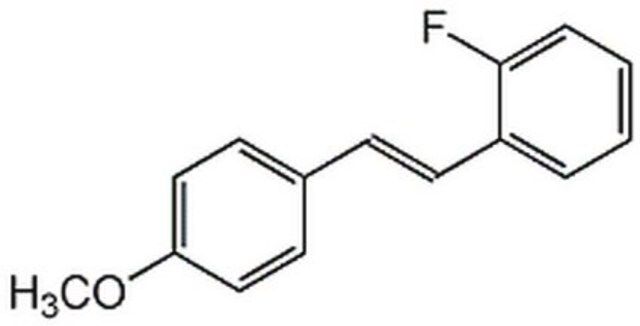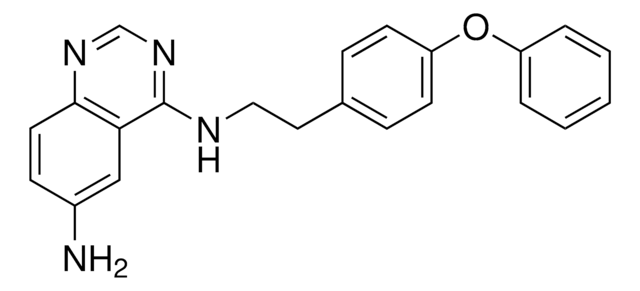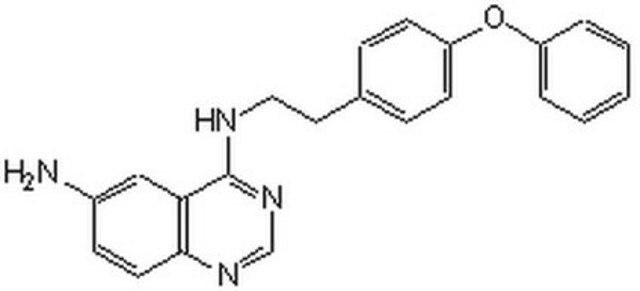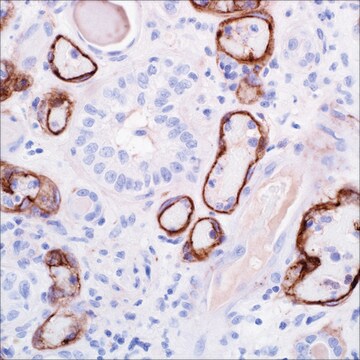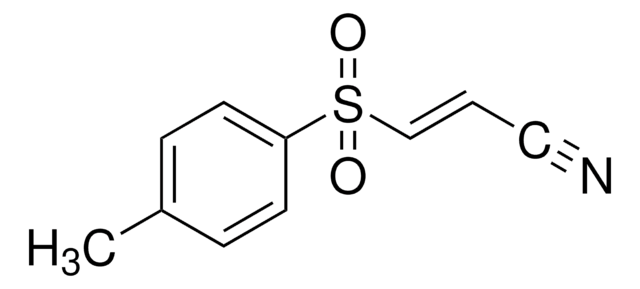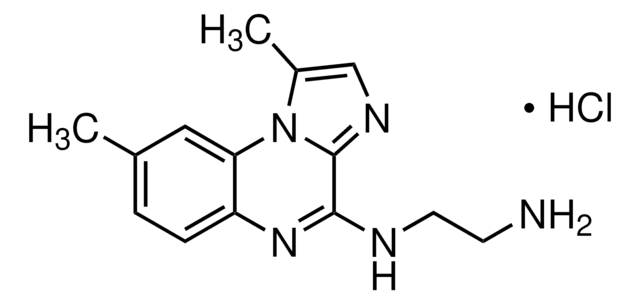481480
NF-κB SN50, Cell-Permeable Inhibitor Peptide
NF-κB SN50, CAS 213546-43-3, is a cell-permeable peptide that contains the NLS sequence of NF-κB p50 linked to the hydrophobic region of K-FGF. Inhibits translocation of the NF-κB into the nucleus.
Synonym(s):
NF-κB SN50, Cell-Permeable Inhibitor Peptide
Sign Into View Organizational & Contract Pricing
All Photos(1)
About This Item
Empirical Formula (Hill Notation):
C129H230N36O29S
Molecular Weight:
2781.50
UNSPSC Code:
12352200
Recommended Products
Quality Level
Assay
≥97% (HPLC)
form
lyophilized
manufacturer/tradename
Calbiochem®
storage condition
OK to freeze
desiccated (hygroscopic)
solubility
water: 5 mg/mL
shipped in
ambient
storage temp.
−20°C
General description
Contains the nuclear localization sequence (NLS) of the transcription factor NF-κB p50 linked to the hydrophobic region (h-region) of the signal peptide of Kaposi fibroblast growth factor (K-FGF). The N-terminal K-FGF h-region confers cell-permeability, while the NLS (360-369) inhibits translocation of the NF-κB active complex into the nucleus. In murine endothelial LE-II cells induced by LPS, NF-κB nuclear translocation is maximally inhibited at 18 µM.
Contains the nuclear localization sequence (NLS) of the transcription factor NF-κB p50 linked to the hydrophobic region (h-region) of the signal peptide of Kaposi fibroblast growth factor (K-FGF). The peptide N-terminal K-FGF h-region confers cell-permeability, while the NLS (360-369) inhibits translocation of the NF-κB active complex into the nucleus. In murine endothelial LE-II cells induced by LPS, inhibition of NF-κB nuclear translocation is maximally inhibited at 18 µM.
NF-κB SN50, CAS 213546-43-3, is a cell-permeable peptide that contains the NLS sequence of NF-κB p50 linked to the hydrophobic region of K-FGF. Inhibits translocation of the NF-κB into the nucleus.
Biochem/physiol Actions
Cell permeable: yes
Primary Target
translocation of the NF-κB active complex into the nucleus
translocation of the NF-κB active complex into the nucleus
Product does not compete with ATP.
Warning
Toxicity: Standard Handling (A)
Sequence
H-Ala-Ala-Val-Ala-Leu-Leu-Pro-Ala-Val-Leu-Leu-Ala-Leu-Leu-Ala-Pro-Val-Gln-Arg-Lys-Arg-Gln-Lys-Leu-Met-Pro-OH
Physical form
Supplied as a trifluoroacetate salt.
Reconstitution
Following reconstitution, aliquot and freeze (-20°C). Stock solutions are stable for up to 3 months at -20°C. Avoid freeze/thaw cycles of solutions.
Other Notes
Lin, Y.-Z., et al. 1995. J. Biol. Chem. 270, 14255.
Legal Information
Sold under license of U.S. Patents 5,807,746 and 6,043,339 for research use only. Licenses for commercial manufacture, commercial use, diagnostics, or therapeutics may be obtained by contacting Vanderbilt University, Nashville, Tennessee.
CALBIOCHEM is a registered trademark of Merck KGaA, Darmstadt, Germany
Certificates of Analysis (COA)
Search for Certificates of Analysis (COA) by entering the products Lot/Batch Number. Lot and Batch Numbers can be found on a product’s label following the words ‘Lot’ or ‘Batch’.
Already Own This Product?
Find documentation for the products that you have recently purchased in the Document Library.
Johanna R Reed et al.
PloS one, 7(9), e45877-e45877 (2012-10-03)
Tumor formation is an extensive process requiring complex interactions that involve both tumor cell-intrinsic pathways and soluble mediators within the microenvironment. Tumor cells exploit the intrinsic functions of many soluble molecules, including chemokines and their receptors, to regulate pro-tumorigenic phenotypes
Our team of scientists has experience in all areas of research including Life Science, Material Science, Chemical Synthesis, Chromatography, Analytical and many others.
Contact Technical Service